Entry into the self-service wash system business
Whether a single-space system or a car wash park, investing in a self-service wash system requires good planning, from choosing the right site and calculating the costs to the size and equipment of the facility. The following contains an overview of the factors that operators should take into consideration in order to find a profitable solution for their requirements.
Anyone planning to enter the self-service wash system business should obtain an overview of the site, costs and
profitability beforehand. Experienced system operators are available to advise investors during the planning phase.
Finding the right site
An optimum site for self-service wash systems is, for example, a well visited industrial estate in the vicinity of a DIY store or supermarket, as this will ensure high visitor frequency. The number of residents living in the area of the planned location is not decisive for the choice of site. Much more important is the official number of vehicle registrations in the stated vicinity. As a rule, the size of the catchment area is roughly five to ten kilometres around the site. In addition, when selecting the location, the situation with regard to competition must be considered. Attention should therefore be paid to how many vehicle wash systems are already available in the vicinity.
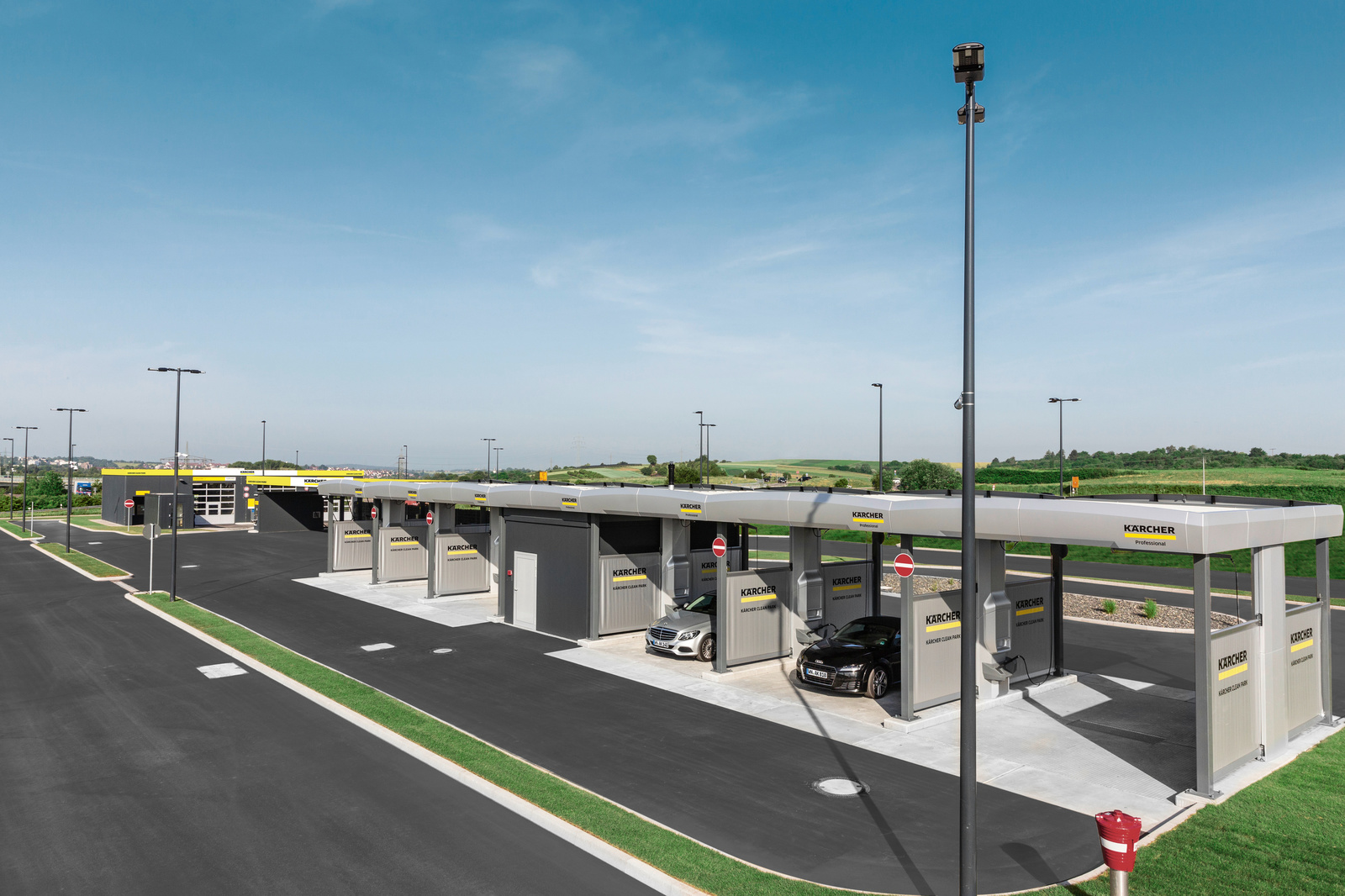
Planning the site
Once the site has been found, it is important to optimally plan how available area will be used. For example, the optimum number of wash bays must be determined. An area of around 30 square metres is required for each wash bay. In addition, space is required for the plant room – an additional 30 square metres. For a facility with three wash bays and vacuuming bays, an area of 1500 square metres should therefore be considered the minimum space. The entrance and exit areas must also be taken into consideration. The use of drive-through bays is recommended, so that cars can drive into the wash bays from one side and out on the other side.
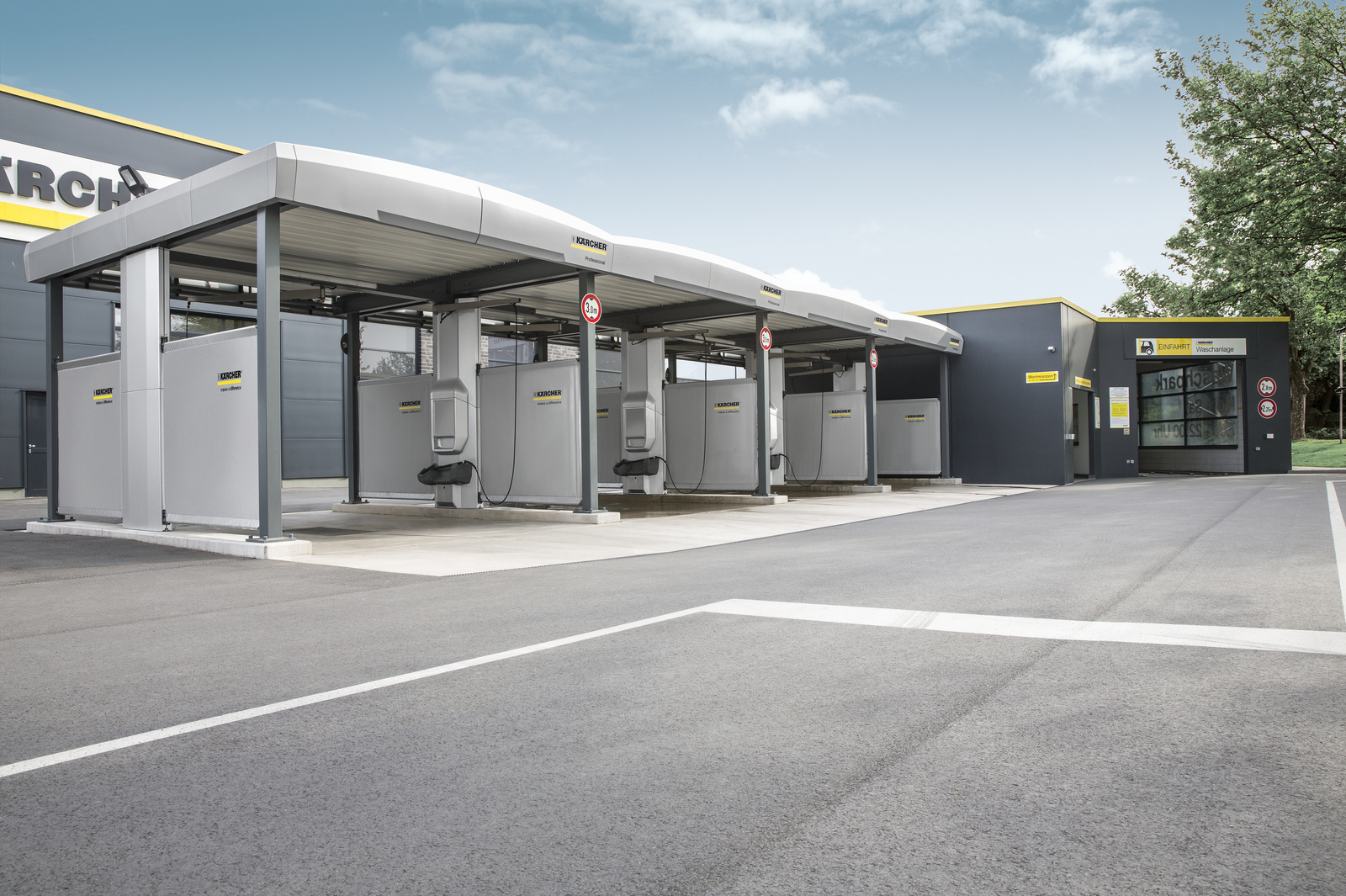

Limited space: Compact self-service wash systems
For sites with limited space available, compact and individually configurable one- or two-bay wash systems are suitable. They allow the installation of a complete self-service wash system on minimum space. For service stations, such facilities provide a profitable secondary business.
Investment and operating costs at a glance
Several parameters have an effect on the amount of financing required for self-service wash systems. The factors range from the location of the site and possible building measures, as well as the size of the facility. Within the framework of an analysis of potential, these topics, tailored to the individual situation, are considered in detail by the manufacturer and customer.
With regard to costs, a distinction must be made between the fixed costs (including land or personnel costs) and variable costs for the operation of the self-service facility. These include expenses for water, electricity, consumables, heating, gas and waste disposal.

Sustainability and self-service wash systems
When a self-service wash system is purchased, attention should always be paid to the sustainability of the facility and the saving of resources. One possibility for cost reduction, for example, is the use of a photovoltaic system, with which the operator produces the power required. Another option for reducing costs and saving water is the utilisation of a biological water treatment system, in which recycled water or rainwater is used in the self-service wash system.
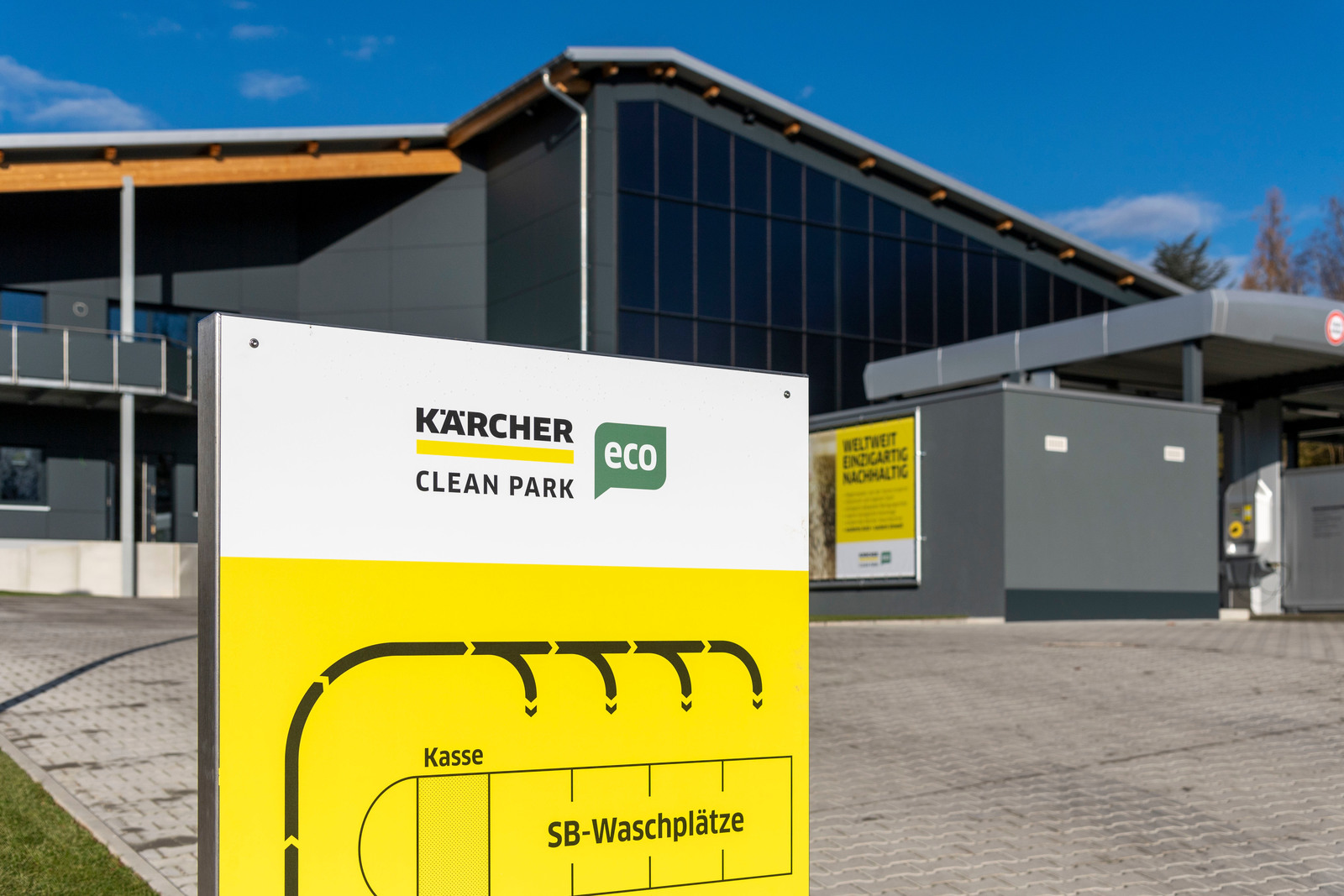
Profitable self-service washing stations: Selection of equipment and programmes
The number of self-service wash bays depends on the site, the available space and, of course, the objectives and intentions of the operator. In order to satisfy all requirements, many manufacturers offer a wide range of modular solutions for the self-service area. It is crucial to find the right solution for the different demands – from the single-bay high-pressure cleaning station to the car wash park. A profitable additional business is provided by the installation of self-service vacuum cleaners and mat cleaners.
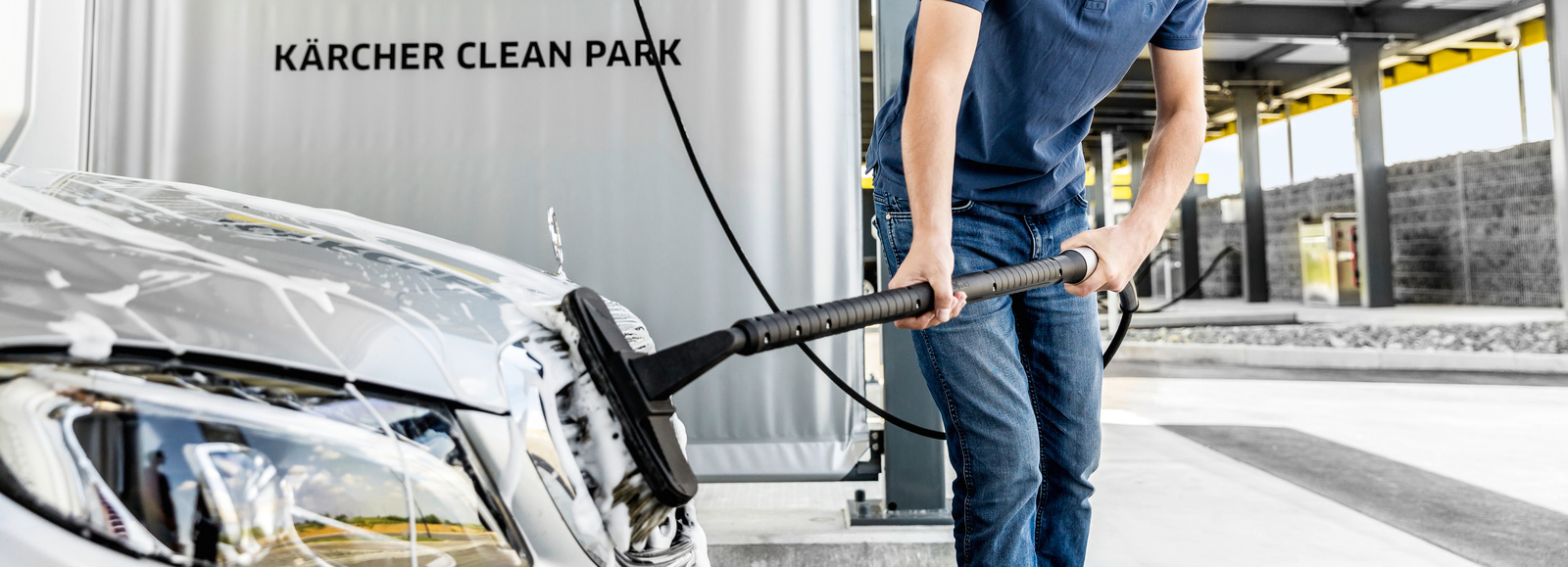

Selecting a programme
The number of expected washes depends on various factors. An important influencing factor is the programme selection available to the car wash customers. In the case of self-service wash systems, numerous programmes can usually be offered – in addition to pre-spray programmes for wheel rims or insects, the high-pressure cleaning and the area of the wash brush are a must. In addition, there are programmes for rinsing with osmosis water, which allow stain-free drying. A practical arrangement of the programmes on the control terminal and suggestions for the step-by-step sequence of exclusive and premium washes additionally help car wash customers and facilitate the operation.

Timing and pricing
Beside the programme selection, timing and costs for the individual wash programmes must also be specified so that they are profitable for the operator.
For high-pressure cleaning and brush washing, a time cycle of 120 seconds is recommended. For programmes such as rim cleaning, 60 seconds is sufficient.
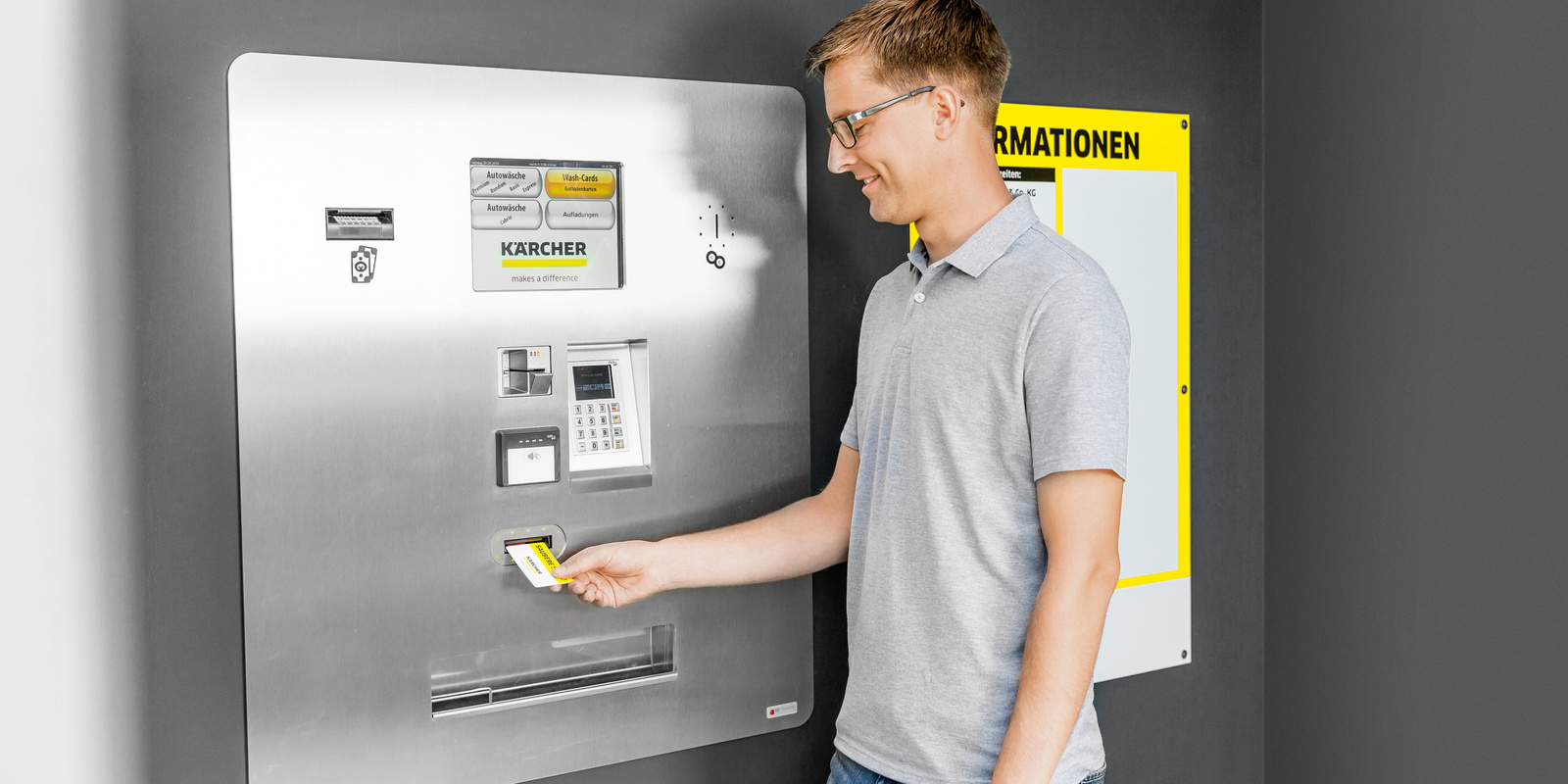
Payment system: From coins to contactless payments
There are various possibilities and systems for paying for vehicle washes in self-service wash bays: Coins, card payment, wash cards from companies or mobile phones. However, the use of cashless solutions as an appropriate payment method is clearly the trend. External payment systems can therefore also usually be connected, in addition to coin solutions. Payment via RFID (customer cards) or with EC/credit cards is thus possible. Systems that allow cashless payment can often also be retrofitted.
Benefits of cashless payment systems:
Operators benefit from the digital systems, which compile more information on customers' washing behaviour. The evaluation of central key figures also provides a good overview of the capacity utilisation and economic viability of individual service locations. Cashless systems also reduce the risk of theft.
For customers, the advantages are clear. The payment process becomes significantly quicker and more convenient, as no small change is required and no money needs changing.

